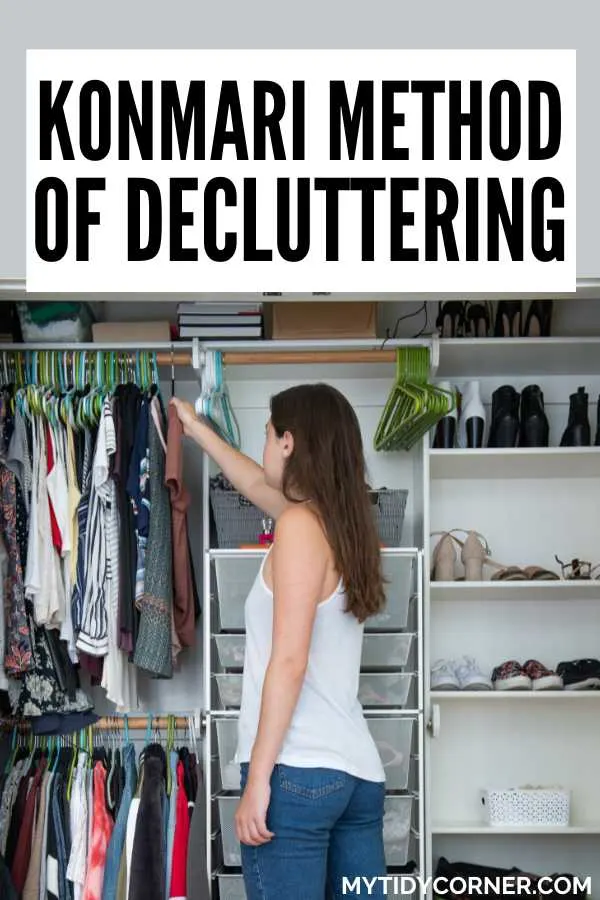This detailed guide to the KonMari decluttering method will help you start your own KonMari journey on the right footing.
When things get overwhelming, we all get the urge to spring clean and declutter our entire home and life. But a revolutionary approach to decluttering and organizing has taken the world by storm.
The KonMari Method of decluttering is much more than just a cleaning technique; it’s a philosophy that encourages individuals to surround themselves only with items that spark joy.
The KonMari Method believes that decluttering is not just about getting rid of things; it’s about curating a living environment that aligns with your values and brings genuine happiness. It guides individuals toward creating a space filled only with items that evoke positive emotions.
In this article, we’ll look at the core principles, exploring how it goes beyond traditional organizing to foster a deeper connection with our belongings. So, let’s embark on this decluttering adventure, where simplicity meets joy and where your living space becomes a reflection of the life you want to lead.
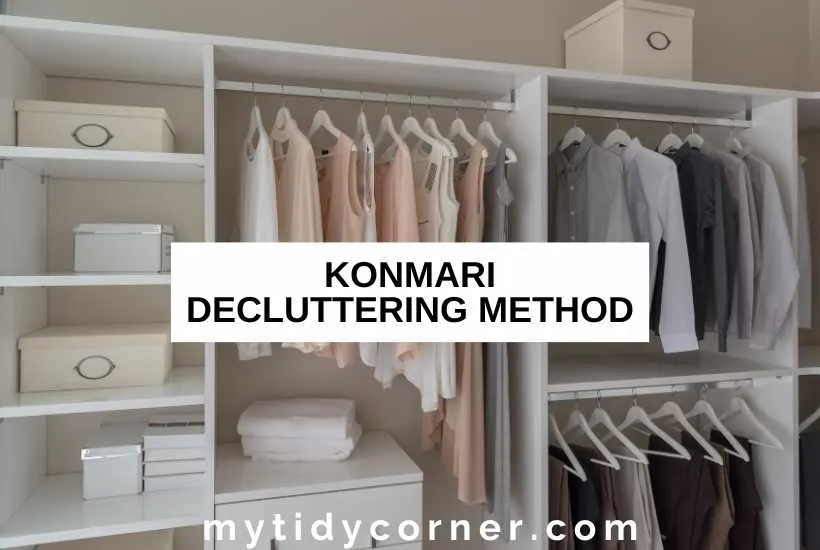
What is The Marie Kondo Method of Decluttering
The KonMari Method, developed by Japanese organizing consultant Marie Kondo, is a unique and holistic approach to decluttering and organizing.
Unlike traditional methods that focus solely on tidying up physical spaces, this method incorporates a deep consideration for the emotional connection individuals have with their belongings. And this has been viewed as a game changer in the decluttering sphere.
At its core, the method encourages people to surround themselves only with items that spark joy and positively contribute to their lives.
The process is structured around specific categories. Rather than decluttering room by room, Kondo recommends tackling one category at a time.
The key element of the method is to physically hold each item and ask yourself whether it sparks joy in you. If an item doesn’t evoke a positive emotion, you let go of it and express gratitude for its service.
With a meticulous focus on simplicity and intentionality, the method transcends typical tidying routines, becoming a cultural phenomenon that transforms how people think about their possessions and living spaces and brings a sense of harmony and joy.
The KonMari Method has gained widespread popularity, inspiring people worldwide to reevaluate their relationship with possessions and transform their homes into spaces that reflect their ideal lifestyle and give them a great feeling.
The 6-Step KonMari Rules
Let’s explore the six basic rules that serve as the backbone of Marie Kondo’s renowned approach to decluttering and organizing.
These simple rules go beyond conventional tidying techniques; they provide a structured framework that helps you foster a more mindful process and transformative approach to harmonizing your living space.
Step 1: Commit Yourself to Tidying Up

The first step (foundational rule) emphasizes the importance of committing to the tidying process. To maintain a tidy home, you will need to commit to tidying up on regular basis.
It is not a one-time task but a dedication to envisioning the living space you desire and acknowledging that the journey may require significant time and effort.
Step 2: Imagine Your Ideal Lifestyle
The second step invites you to embark on a journey of imagination, where individuals are encouraged to envision their ideal lifestyle, fostering a profound connection between the physical space they inhabit and the life they aspire to lead.
Items are no longer merely possessions but rather become contributors to the narrative of your life. This imaginative exercise acts as a filter, helping you distinguish between what aligns with your vision and what is incongruent with your aspirations.
As you imagine your ideal lifestyle, consider not only the physical aspects of your space but also the emotional and mental facets.
- How do you want to feel when you walk into your home?
- What kind of energy do you want your space to exude?
Step 3: Discard Before You Organize
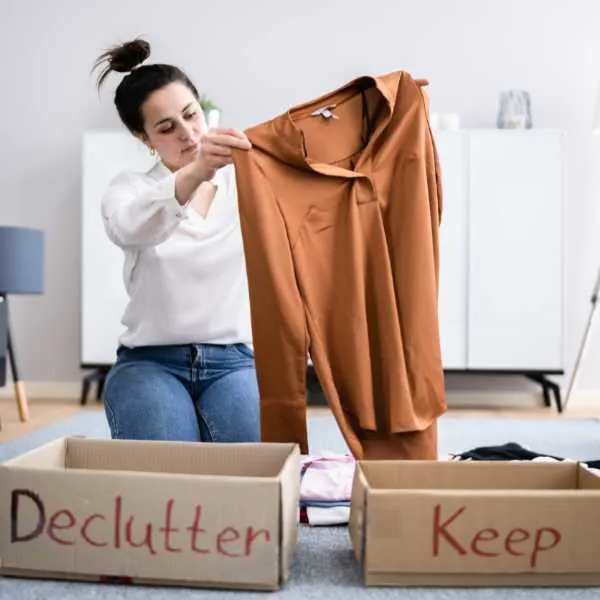
This principle challenges the common practice of attempting to organize clutter. Kondo advocates for a shift in focus before investing time and energy in arranging items neatly, confronting the necessity of each possession, and making conscious decisions about what to keep.
By discarding first, you create space for the belongings that genuinely contribute to your well-being, making the subsequent organization process more meaningful and efficient.
Evaluate its significance, asking the pivotal question: does this spark joy? If yes, the item earns its place; if not, express gratitude for its service and let it go.
Step 4: Tidy by Category, Not by Location
The basis behind this principle is to facilitate a comprehensive assessment of each item category, allowing for a more mindful and deliberate decision-making process.
Instead of organizing a single room at a time, you gather all items from a specific category, such as clothing, books, and sentimental items, in one central location.
This inclusive approach is especially beneficial when dealing with items dispersed throughout the home, enabling you to see the full extent of your belongings within a given category. This makes it easier to identify duplicates, assess the overall volume, and make informed decisions about what to keep.
That being said, I personally prefer decluttering by location because I like to see one location done with before moving to another location.
For example, decluttering the kitchen and seeing how tidy it looks gives me the motivation I need to continue with my decluttering journey.
Step 5: Follow the Right Order
Following the correct order is an intentional and transformative journey, not just in the physical space but also in one’s mindset and relationship with possessions.
Each category builds upon the lessons of the previous one, creating a holistic and intentional approach to decluttering and organizing.
The prescribed order of the KonMari process is as follows:
- Clothing — is often less emotionally charged than other categories, making it an ideal beginning.
- Books — slightly higher emotional elements that can carry sentimental value. This stage encourages you to confront attachments.
- Papers — by this time, you’ve honed your decision-making skills. You are better equipped to tackle potentially sentimental or essential documents.
- Miscellaneous items — miscellaneous category encompasses a broad range, from kitchen items to décor. By reaching this stage, you’ve developed a discerning eye for what truly sparks joy.
- Sentimental possessions — by saving this for last, the KonMari Method recognizes that you’re now better equipped to make thoughtful decisions about items that hold significant emotional value.
Step 6: Asking Yourself if It Sparks Joy
Central to the KonMari Method is the question, “Does it spark joy?” When holding each item, evaluate whether it elicits positive emotions. If it does, keep it; if not, express gratitude and let it go.
This rule fosters a more intentional and emotionally connected relationship with possessions.
The 5 Category KonMari Decluttering Tips
These decluttering tips ensure that the process is effective and a transformative and positive experience that will help you change your mindset and never revert to hoarding clutter.
Systematically addressing these categories creates a home with items that bring joy and align with your ideal lifestyle.
Tip 1: Clothing
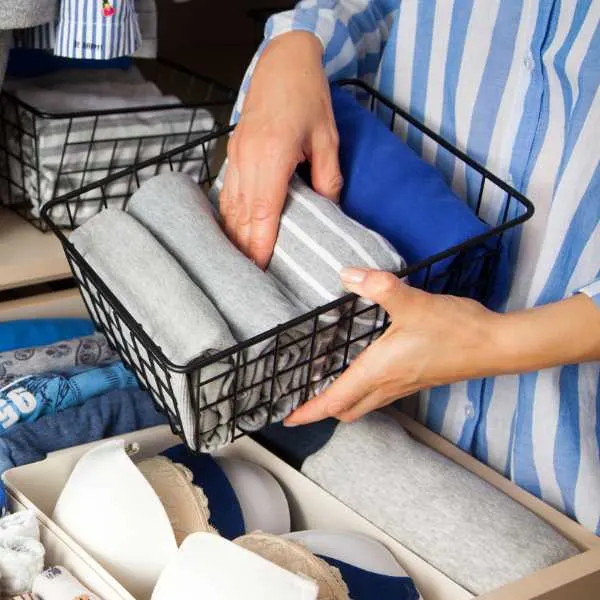
If you are at the beginning of your own KonMari journey, it will be wise to start with the clothing category. Gather all your clothing items, including those tucked away in drawers and closets.
Hold each item, assess whether it sparks joy, and only keep those that resonate positively. Consider folding clothes using the KonMari folding technique to optimize space and visibility.
Tip 2: Books
Moving on to books, gather your entire book collection. Similar to clothing, hold each book and evaluate its joy-sparking potential. Marie Kondo suggests keeping only those books that you genuinely love or plan to read. Organize them in a way that allows you to appreciate and access each title easily.
Tip 3: Papers
Tackling the paper category involves sorting through documents, letters, and other paper items. Create a designated space for essential documents and discard unnecessary papers and junk mail.
Kondo recommends keeping only those papers vital for daily life or holding sentimental value, ensuring a clutter-free and organized environment.
Tip 4: Miscellaneous Items (Komono)
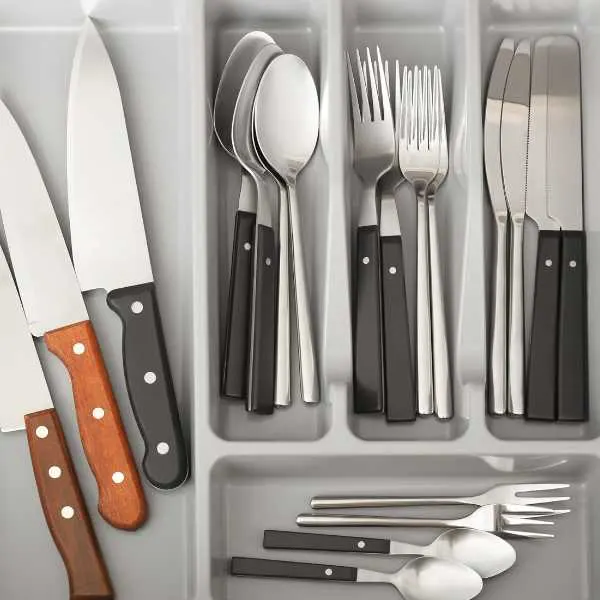
This broad category of komono encompasses a variety of items, from kitchen utensils to electronic gadgets. Declutter by subcategories, evaluating each item’s joy factor.
Simplify your space by discarding duplicates and items that no longer serve a purpose. Organize remaining items in a way that promotes accessibility and functionality.
Tip 5: Sentimental Items
The final and often most challenging category involves sentimental items such as photos, souvenirs, and keepsakes. We have emotional attachment to these items, making it difficult to let go of them. Approach this category with a focus on preserving what truly holds emotional value.
Create a designated space for these items, allowing you to appreciate and cherish the sentimental aspects without holding unto unnecessary clutter and overwhelming your living space.
Additional Resources and Further Reading
- Life-Changing Magic of Tidying Up – The Japanese Art of Decluttering and Organizing
- Marie Kondo’s Kurashi at Home: How to Organize Your Space and Achieve Your Ideal Life
- KonMari Netflix Series
Final Thoughts on the KonMari Method of Decluttering
The Marie Kondo’s method is not merely about organizing possessions; it’s a philosophy that invites you to live with intention, both in your physical space and your mindset. Be sure to surround yourself with only items that bring joy and align with the life you aspire to lead and let go of things that do no spark joy.
May your decluttered space be a canvas for joy, a reflection of your values, and a constant source of inspiration for the chapters yet to unfold in your life.
